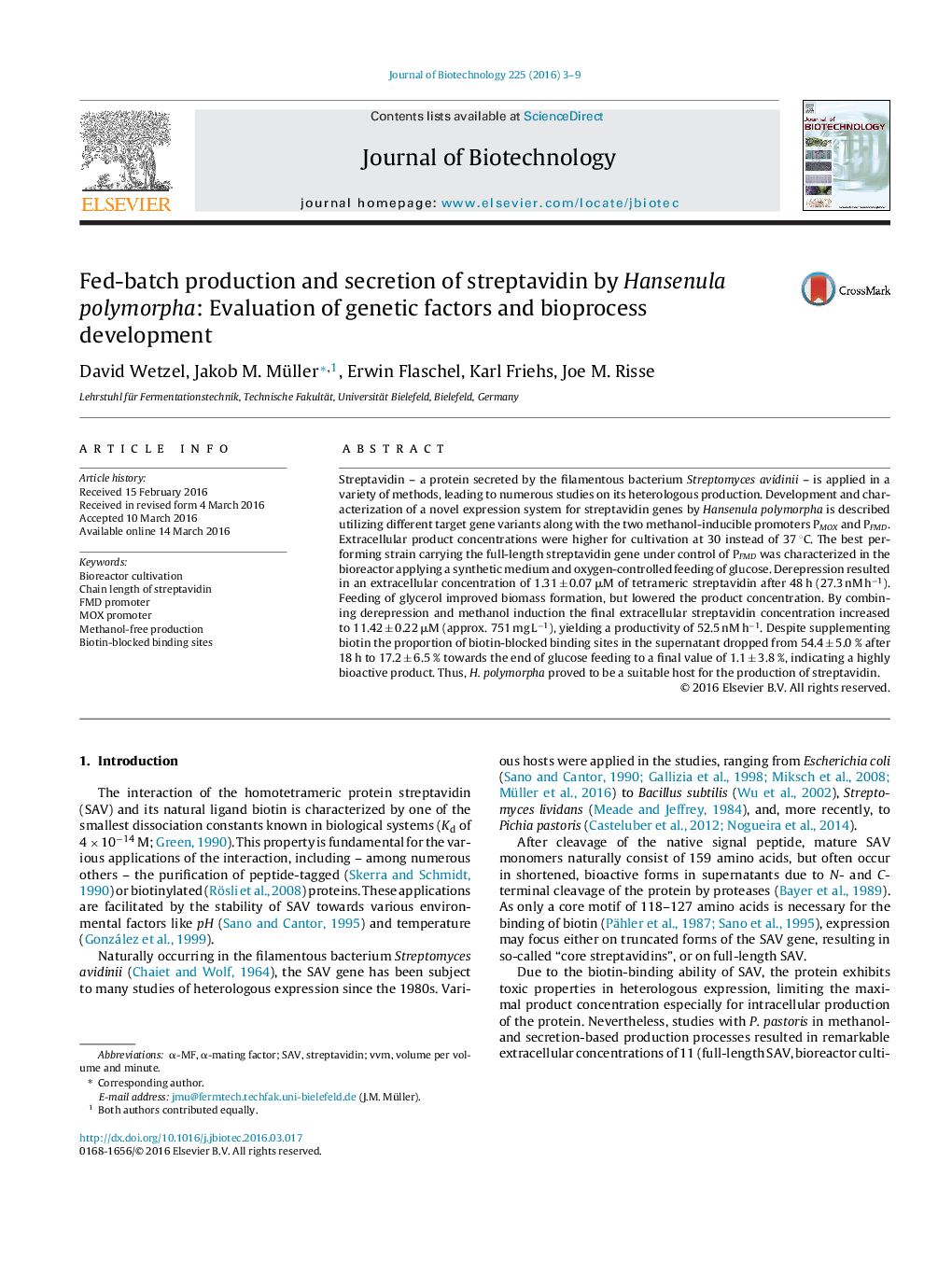| Article ID | Journal | Published Year | Pages | File Type |
|---|---|---|---|---|
| 6490604 | Journal of Biotechnology | 2016 | 7 Pages |
Abstract
Streptavidin - a protein secreted by the filamentous bacterium Streptomyces avidinii - is applied in a variety of methods, leading to numerous studies on its heterologous production. Development and characterization of a novel expression system for streptavidin genes by Hansenula polymorpha is described utilizing different target gene variants along with the two methanol-inducible promoters PMOX and PFMD. Extracellular product concentrations were higher for cultivation at 30 instead of 37 °C. The best performing strain carrying the full-length streptavidin gene under control of PFMD was characterized in the bioreactor applying a synthetic medium and oxygen-controlled feeding of glucose. Derepression resulted in an extracellular concentration of 1.31 ± 0.07 μM of tetrameric streptavidin after 48 h (27.3 nM hâ1). Feeding of glycerol improved biomass formation, but lowered the product concentration. By combining derepression and methanol induction the final extracellular streptavidin concentration increased to 11.42 ± 0.22 μM (approx. 751 mg Lâ1), yielding a productivity of 52.5 nM hâ1. Despite supplementing biotin the proportion of biotin-blocked binding sites in the supernatant dropped from 54.4 ± 5.0 % after 18 h to 17.2 ± 6.5 % towards the end of glucose feeding to a final value of 1.1 ± 3.8 %, indicating a highly bioactive product. Thus, H. polymorpha proved to be a suitable host for the production of streptavidin.
Related Topics
Physical Sciences and Engineering
Chemical Engineering
Bioengineering
Authors
David Wetzel, Jakob M. Müller, Erwin Flaschel, Karl Friehs, Joe M. Risse,
